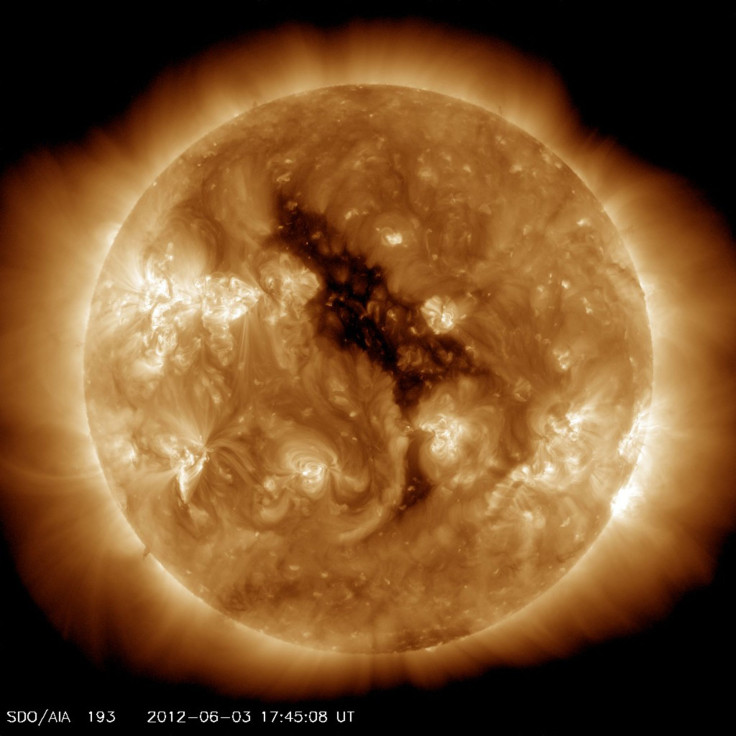Sun’s gigantic coronal hole hurtling radioactive solar particles towards Earth, NASA’s SDO reveals

NASA's Solar Dynamics Observatory (SDO) recently captured a massive hole on the sun’s surface, known as coronal hole, blasting radioactive solar particles towards Earth. Scientists are unsure as to why this has happened. It is not known what causes these coronal holes. Although they seem menacing, coronal holes are relatively common and generally do not spell doom for either Earth or the Sun.
Whenever a coronal hole opens up, it sends a massive rush of solar winds hurtling towards Earth. These cause auroras in the skies, writes Mirror.co.uk. These holes are important in understanding the space environment around Earth as astronauts and technology travel through these environments. Coronal holes are sources of high-speed wind of solar particles. They stream off the sun three times faster than slower wind elsewhere.
Solar winds are a stream of plasma that contains charged particles shooting off the sun. As the stream of charged particles hit Earth’s magnetosphere, they cause storms that sometimes lead to aurora borealis. However, at times such an interaction may also disrupt communications and power supply.
In 2015, a gigantic rift opened up in the sun and it was capable of swallowing 50 Earths. This massive hole sent solar wind towards our planet that made the Northern Lights visible for several nights.
“While it’s unclear what causes coronal holes, they correlate to areas on the sun where magnetic fields soar up and away, without looping back down to the surface, as they do elsewhere,” NASA wrote.
According to Gizmag, coronal holes are low-density areas of the sun’s atmosphere and they are known as corona. They contain very little solar material and have lower temperatures. Hence, they appear darker than its surrounding areas. Coronal holes can be visible only in certain types of extreme ultraviolet light, typically invisible to human eyes.
NASA’s SDO launched in 2010 and it contains instruments specially designed to observe the sun.





















